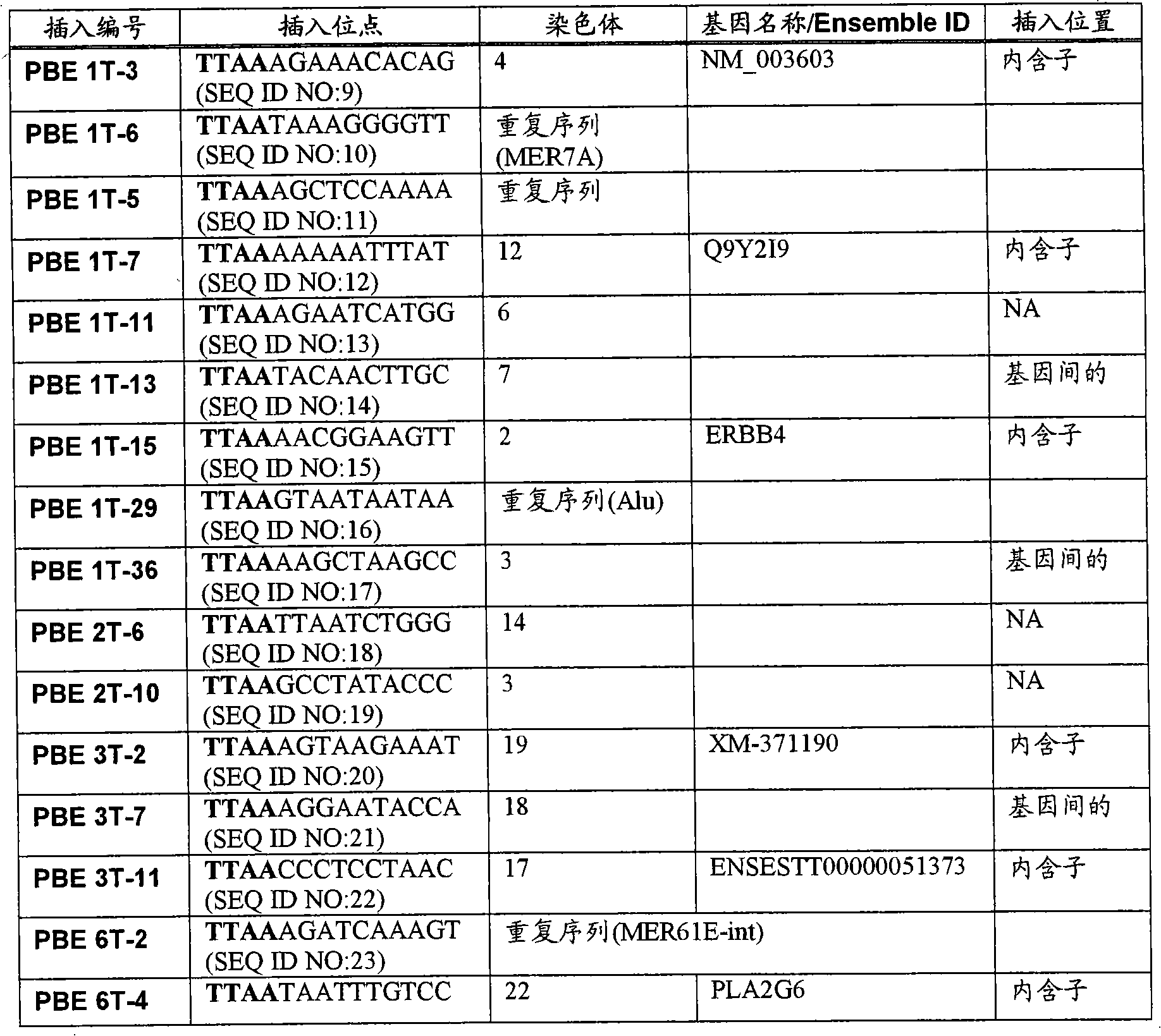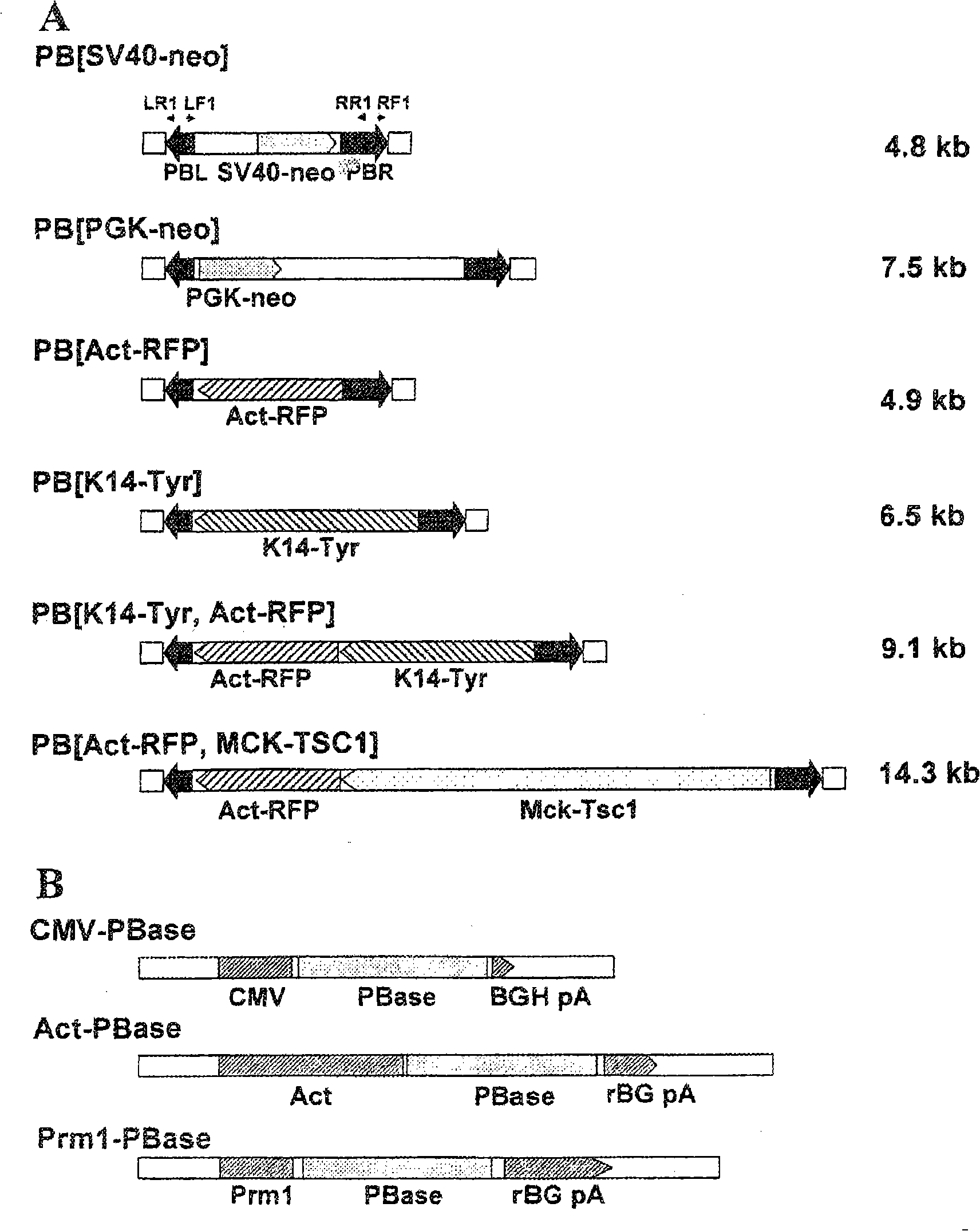PiggyBac used as genetic operation and analysis tool of vertebrate
A technology for vertebrates and species, applied to cells modified by the introduction of foreign genetic material, biochemical equipment and methods, and the use of vectors to introduce foreign genetic material, etc., can solve the problems of limited number of transposon systems and limitations
- Summary
- Abstract
- Description
- Claims
- Application Information
AI Technical Summary
Problems solved by technology
Method used
Image
Examples
Embodiment Construction
[0066] The present invention provides the use of piggyBac-like transposon systems in vertebrate cells and non-human vertebrate organisms. The invention provides vertebrate cells and non-human organisms engineered to express components of the piggyBac-like transposon system, methods of making such cells and organisms, and libraries of such engineered cells and organisms.
[0067] The present invention relates to the introduction of the piggyBac-like transposon of the present invention into the genome of a cell. Efficient incorporation of transposons occurs when cells also contain a piggyBac-like transposase. As described above, the piggyBac-like transposase can be provided to the cell as a piggyBac-like transposase protein or as a nucleic acid encoding the piggyBac-like transposase. The nucleic acid encoding the piggyBac-like transposase can be in the form of RNA or DNA. In addition, nucleic acids encoding piggyBac-like transposases can be stably or transiently incorporated i...
PUM
 Login to View More
Login to View More Abstract
Description
Claims
Application Information
 Login to View More
Login to View More - R&D
- Intellectual Property
- Life Sciences
- Materials
- Tech Scout
- Unparalleled Data Quality
- Higher Quality Content
- 60% Fewer Hallucinations
Browse by: Latest US Patents, China's latest patents, Technical Efficacy Thesaurus, Application Domain, Technology Topic, Popular Technical Reports.
© 2025 PatSnap. All rights reserved.Legal|Privacy policy|Modern Slavery Act Transparency Statement|Sitemap|About US| Contact US: help@patsnap.com



